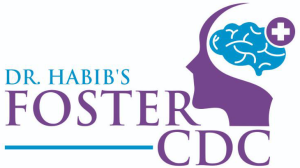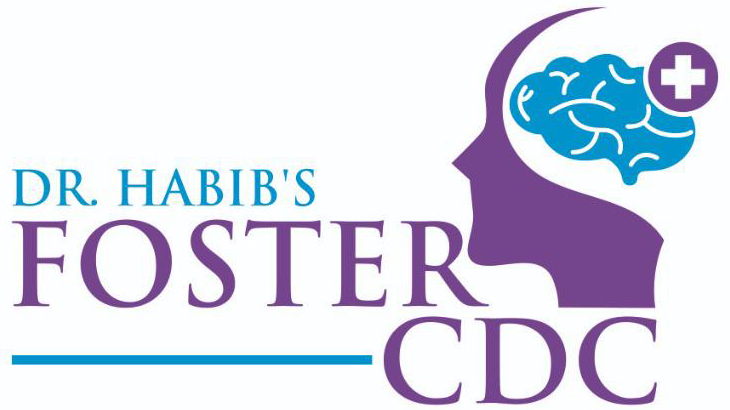Movement disorders are the most commonly encountered problem in children. There is a broad range of disorders representing a neurological, genetic or a metabolic cause. The most common movement disorders in children include chorea, tremor, myoclonus, dystonia, tic disorders and functional neurological disorders. The cause of movement disorders in children depends on their course, their static or progressive nature, and whether an isolated symptom or an association with other neurological symptoms are present. The clue to the diagnosis is the proper recognition of the movement prevalent in the disorder.
Types of movement disorders include:
Chorea
Chorea is a type of movement disorder in children wherein children have irregular movements or dance-like flowing movements. Though it is not a disease in itself, chorea is a symptom of neurologic damage. The movement is described as athetosis – slow and writhing or ballismus (forceful). The child intends to make motions incorporating irregular movements due to which walking becomes difficult and the child stumbles frequently.
The causes of chorea may include head trauma, injury at birth, adverse-effect of medication, inflammation and infection. Chorea can also be due to a genetic cause.
Types of Chorea
- A rare form of genetic chorea which is uncommon in children. It is known as Juvenile Huntington Disease.
- Syndenham chorea: A short-lived autoimmune type of chorea – also known as rheumatic encephalitis. A streptococcus infection may cause Syndenham chorea
- Chorea due to genetic causes (due to mutations)
Tremor
Trembling or shaking of a limb is known as tremor. Rhythmic shaking as seen in tremor can occur during movement or at rest. Children may have just trembling or may have associated neurological symptoms such as problems with adjusting movements and weakness of the affected limb. The causes of tremors can range from a head injury, underlying disease, adverse effects of medicines to genetic diseases. An essential tremor is a form of inherited tremor that runs in families.
Sometimes tremor is just a temporary part of a child’s motor development; in other cases, it may be long-lasting. Unlike most other movement disorders, children can sometimes consciously suppress tremors.
Myoclonus
Myoclonus is a movement disorder involving involuntary, sudden, very quick muscle jerks – which the child cannot stop or suppress. The pattern of jerks can be semi-rhythmic or random and are seen frequently or occasionally. Sometimes, this type of movement disorder is triggered by a sudden touch, holding the body in a certain posture or due to sudden excitement in children.
If you notice any type of movement disorder or myoclonus in your child, it is better to consult a movement disorder specialist to know the exact cause and the type of myoclonus. The next important aspect of myoclonus is that it can also be due to a seizure or epilepsy – especially myoclonic epilepsy. A child neurologist will evaluate the child and test him or her for epilepsy. Myoclonus can also be due to neurodegenerative disorder, brain injury or metabolic syndrome.
Dystonia
Dystonia is a movement disorder due to abnormal contractions of muscles owing to faulty brain signals. A group of muscles do not show coordinated contraction rather they contract in opposing fashion resulting in abnormal twisting, uncomfortable, awkward, painful movements and contorting postures.
Dystonia disorder and the symptoms associated with it often begin in one part of the body – hand, leg or mouth and then move to other parts. The symptoms can begin while walking, writing or doing activities – but can also occur during rest. Timely approach and consultation with a paediatric neurologist upon noticing the symptoms for the first time is important as the disorder can progress and eventually damage joints and muscles. Hands and legs of the child may freeze into dystonic position.
- Primary dystonia is not associated with any other neurological disorder. It can be due to a genetic cause. The progress of primary dystonia is very rapid during the first five years of onset, but it gradually tends to stabilize after that. Whatever may be the case, it needs to be addressed as a delay in seeking treatment can render a child’s ability to move by causing serious movement limitations.
- Secondary dystonia has an underlying cause – which can be an inherited one or metabolic. Head injury, trauma, brain injury during birth, metabolic disorder and inherited degenerative syndrome can cause this type of dystonia. The severity and symptoms associated with this condition may differ according to the underlying cause. A small percentage of children with cerebral palsy also have dystonia.
Tic disorders/Tourette syndrome
Tic disorders are common in children and can involve any body part. The symptoms involve sudden movements or sounds that are involuntary. Tics can vary in severity ranging from mild, less severe and barely noticeable to severe, frequent and disruptive. Children can manage or suppress tics temporarily. If tics persist even after treatment it is better to consult a paediatric neurologist. In some children, tics become progressively disturbing, but in the majority of the children, tics resolve as a child reaches adolescence.
Tourette syndrome: This disorder is seen in children who have both motor and vocal tics that may persist for more than a year. Children who have this disorder may also have learning disabilities, ADHD and OCD. Therefore, if a child has this disorder, it is better to get the disorder evaluated by a child neurologist or developmental specialist.
Functional neurological disorders/conversion disorder
A condition known as functional neurological symptom disorder, sometimes called conversion disorder, can cause any of the movement disorders including chorea, tremor, myoclonus, dystonia and tic disorder or Tourette syndrome even when no neurologic cause or condition can be identified.
Movement disorders in children follow stressful life events. If a child has a neurological disorder, then functional neurological disorders can make that condition bad to worst. Functional neurological disorders can also occur with other neurological conditions and are as severe as movement disorders. Better recovery is seen in children suffering from movement disorders with supportive care from both a paediatric neurologist and physical therapist. In addition, collaborative care from a child psychiatrist and psychologist can also help children recover from functional movement disorders.


